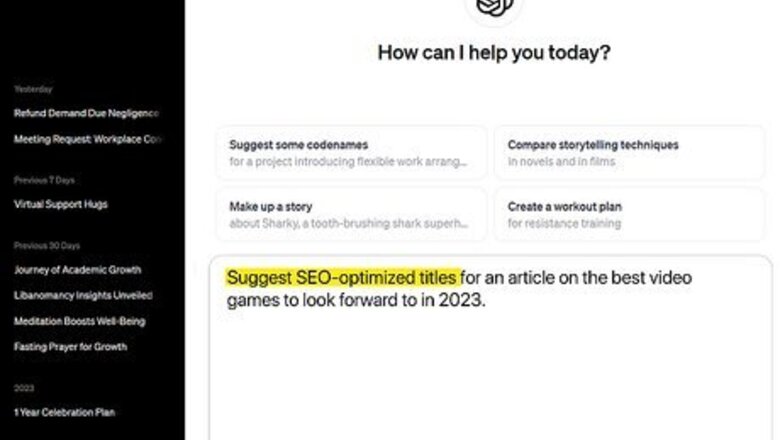
views
- ChatGPT can be used in a variety of fields, including content creation, coding and scripting, business, marketing, research, and education.
- Include as much detail in your prompts as possible. Use follow-up prompts to refine your answers.
- Check your ChatGPT answers for accuracy. Refine your answers and put them in your own words. Use ChatGPT answers as a guide, not the final product.
Content Creation
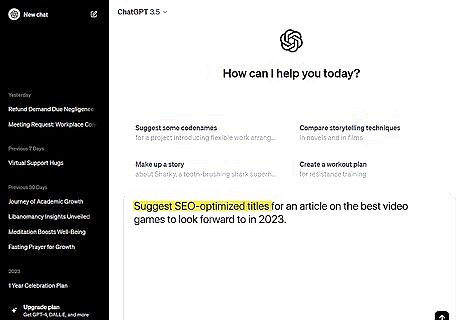
Help with writing a blog with ChatGPT. You can use ChatGPT to assist with writing a blog. It can be used to suggest keywords, suggest article titles, create an outline for a blog post, and even write the first draft of a blog post. If you use ChatGPT to write an entire article, you should review it and edit it before publishing it. Example prompt: "Create a list of keywords related to e-commerce marketing in 2023." Example prompt: "Suggest SEO-optimized titles for an article on the best video games to look forward to in 2023." Example prompt: "Create an outline for a blog post on the topic of 'How to mix hip-hop beats for beginners.'"
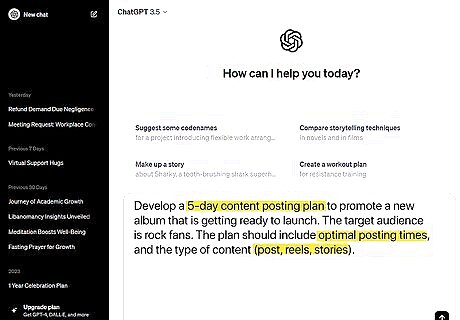
Writing social media posts. You can use ChatGPT to write social media posts and develop a posting schedule or plan. Example prompt: "Create a motivational post for Twitter. The target audience is women fitness enthusiasts, age 20 to 40." Example prompt: "Develop a 5-day content posting plan to promote a new album that is getting ready to launch. The target audience is rock fans. The plan should include optimal posting times, and the type of content (post, reels, stories)." Example prompt: "Suggest a Facebook post summarizing the following blog post [link to blog post]."
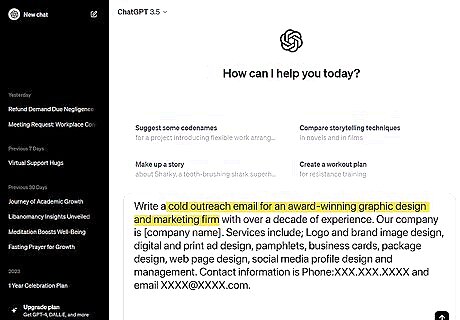
Email marketing. You can use ChatGPT to suggest marketing emails for outreach and to generate leads. When prompting ChatGPT, be sure to include your business name, the product you are selling, any specific formats or styles, as well as any key points you want to include. Example prompt: "Write a cold outreach email for an award-winning graphic design and marketing firm with over a decade of experience. Our company is [company name]. Services include; Logo and brand image design, digital and print ad design, pamphlets, business cards, package design, web page design, social media profile design and management. Contact information is Phone:XXX.XXX.XXXX and email [email protected]."
Coding and Scripting

Write snippets of code. You can ask ChatGPT to write code for an algorithm or function. Be sure to be as clear as possible in your prompts. Example prompt: "Write a Java function that adds the sum of two integers." Example prompt: "Write a Python script that sorts a list in ascending order."

Complete unfinished code. If start writing code and you get stuck and are unsure what to do next, you can submit it to ChatGPT for suggestions on how to finish. Example prompt: "Complete this Java script that calls a function [copy and past script]."
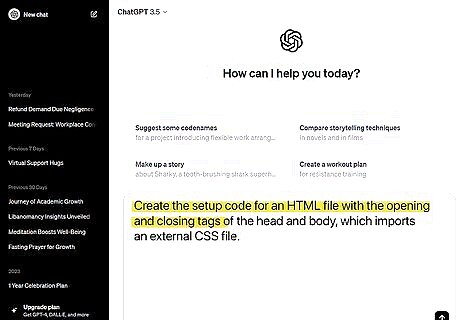
Create generic code templates. You can use ChatGPT to generate commonly used scripts, code templates, and boilerplates that are used in a variety of applications and don't change a lot from one use to another. Example prompt: "Create the setup code for an HTML file with the opening and closing tags of the head and body, which imports an external CSS file." Example prompt: "Create a script that declares a function in Java."
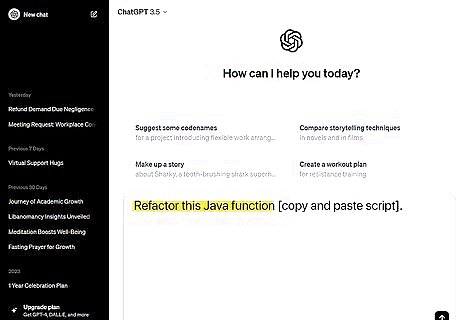
Improve or refactor code. Once you have finished writing your code, you can use ChatGPT to suggest improvements to your code. Example prompt: "Refactor this Java function [copy and paste script]."
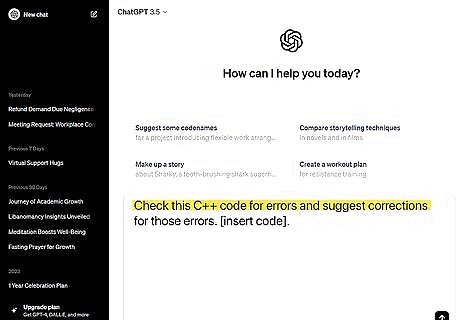
Debug code. Once you have finished writing your script or code, you can use ChatGPT to check for errors or find ways to fix errors that you encounter while testing your code. Example prompt: "Check this C++ code for errors and suggest corrections for those errors. [insert code]." Example prompt: "C++ code returns error "undefined reference to `main'". Please debug this code [insert code]."
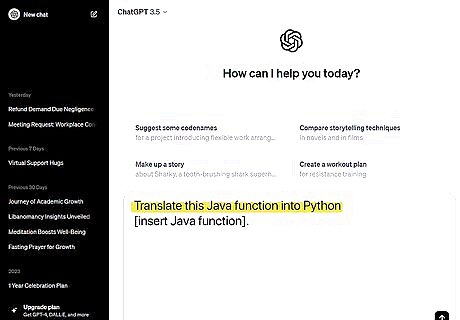
Translate code from one language to another. You can use ChatGPT to translate code from one language to another. However, you should be aware of the limitations. Not all programming languages are the same and some may not translate from one language to another with the same robust function. Example prompt: "Translate this Java function into Python [insert Java function]."
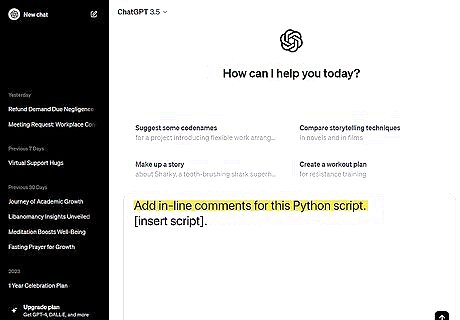
Create documentation for code and scripts. You can use ChatGPT to add in-line comments for code. You can also ask ChatGPT to create a README file or tutorial by providing ChatGPT with an explanation of your software and its components. Example prompt: "Add in-line comments for this Python script. [insert script]." Example prompt: "Create a README file for this program. (include information about what your program does and its components.)"
Business
Customer support. ChatGPT can be integrated into customer support systems to provide automated responses to customer inquiries promptly. It is also multilingual so it can service a diverse customer base.
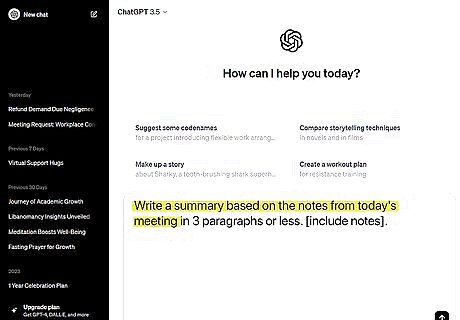
Generate reports and summaries. You can input data into ChatGPT and ask it to summarize data into a quick summary or report. Example prompt: "Write a summary based on the notes from today's meeting in 3 paragraphs or less. [include notes]." Example prompt: "Create an earnings report for December. Compare this month's earnings to earnings from December of last year. [insert data]."
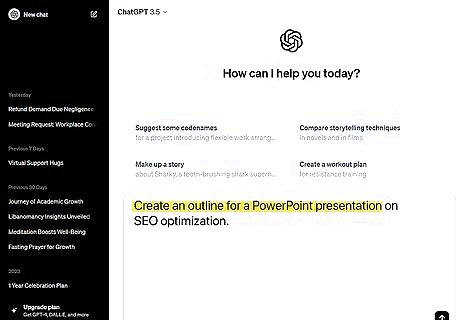
Create outlines for longer reports and presentations. For long-form articles, reports, and presentations, you can use ChatGPT to create an outline that you can use as a template: Example prompt: "Create an outline for a PowerPoint presentation on SEO optimization."
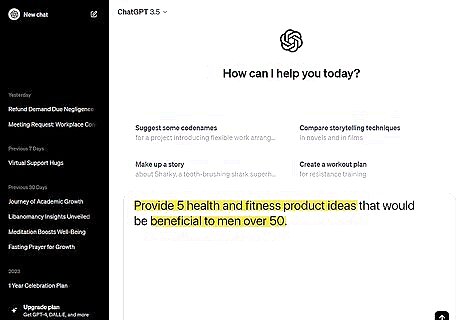
Brainstorming ideas. You can ask ChatGPT questions and brainstorm ideas. Example prompt: "Provide 5 health and fitness product ideas that would be beneficial to men over 50."
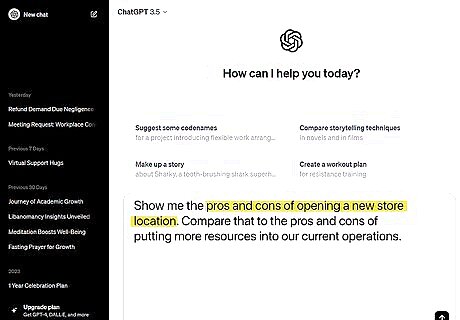
Help with making decisions. When you provide ChatGPT with enough information, you can ask it to conduct an analysis that helps with decision-making. Example prompt: "Show me the pros and cons of opening a new store location. Compare that to the pros and cons of putting more resources into our current operations."
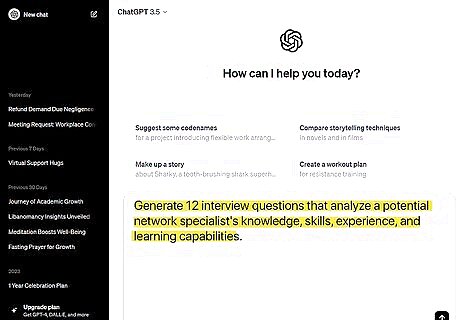
Human resources. There are a variety of ways ChatGPT can help with human resources. It can be used to create job descriptions, generate interview questions, onboarding materials, and more. Example prompt: "We need to hire a new IT network security specialist. Create a job posting that includes the following qualifications [list qualifications]. The job will include the following duties [list duties]." Example prompt: "Generate 12 interview questions that analyze a potential network specialist's knowledge, skills, experience, and learning capabilities."
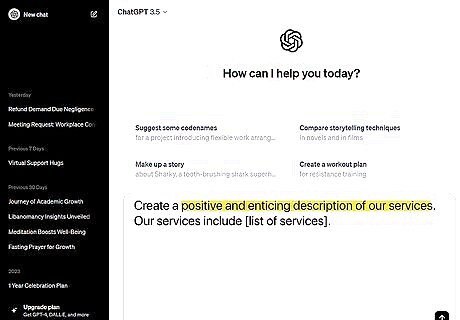
Create product and service descriptions. You can use ChatGPT to generate descriptions of the products and services that you sell. Example prompt: "Create a positive and enticing description of our services. Our services include [list of services]."
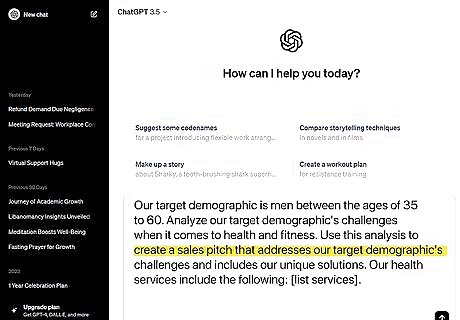
Create a sales pitch. When you feed ChatGPT information about your clients or customers, including your target audience and what their needs are, ChatGPT can help you craft a sales pitch you can use to get new customers. Example prompt: "Our target demographic is men between the ages of 35 to 60. Analyze our target demographic's challenges when it comes to health and fitness. Use this analysis to create a sales pitch that addresses our target demographic's challenges and includes our unique solutions. Our health services include the following: [list services]."
Education
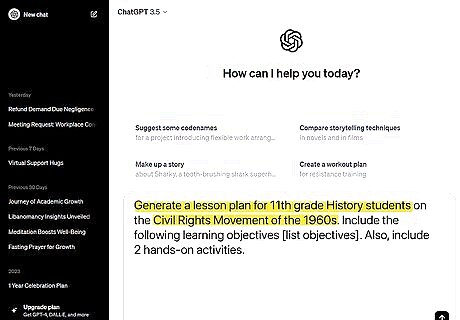
Help with creating lesson plans. Teachers can use ChatGPT as an assistant when creating lesson plans. You can feed ChatGPT the learning objectives and ask GPT to generate a comprehensive lesson plan. Example prompt: "Generate a lesson plan for 11th grade History students on the Civil Rights Movement of the 1960s. Include the following learning objectives [list objectives]. Also, include 2 hands-on activities."
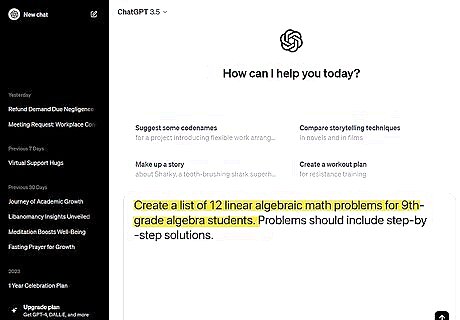
Help with creating quizzes and assessments. Teachers can use ChatGPT to help with creating questions for assessments. Example prompt: "Create a list of 12 linear algebraic math problems for 9th-grade algebra students. Problems should include step-by-step solutions." Example prompt: "Create a 20-question assessment on the Civil War for 11th grade history students. Questions should assess students' understanding of the cause of the war, the start and end dates of the war, important battles and events, and the direct consequences of the war. Include 15 multiple-choice questions and 5 written-word response questions."
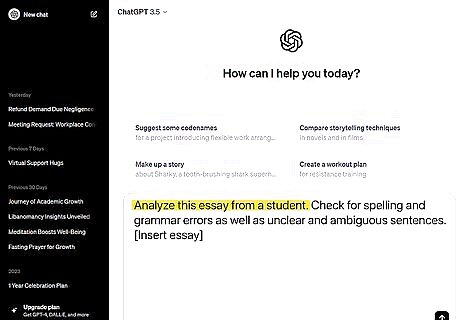
Help with grading papers. Teachers can use ChatGPT to help with grading papers and assignments. ChatGPT can be used to automatically grade multiple-choice papers, or analyze errors that students make. Example prompt: Analyze this essay from a student. Check for spelling and grammar errors as well as unclear and ambiguous sentences."

Language barrier support. Teachers can use ChatGPT to translate learning materials and assignments into other languages to support students with language barriers. Example prompt: "Translate this syllabus into Spanish for my Spanish-speaking students [insert syllabus]."
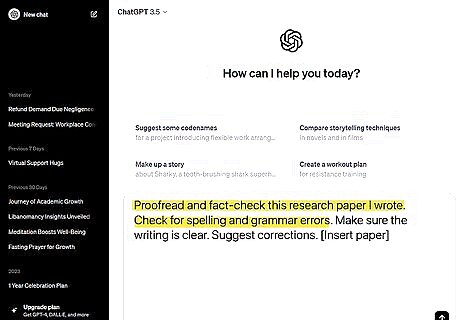
Support for students. One fear that many teachers have is that students will use ChatGPT to do their assignments for them. While this is a real problem, there are many legitimate ways ChatGPT can assist students. Students can use ChatGPT to assist with research, math problems, proofreading, tutoring, and writing support: Example prompt: "I am an 11th grade history student. Provide an outline on key events that led up to the start of the Civil War." Example prompt: "Show me the proper steps to solve a parabolic math equation." Example prompt: "Proofread and fact-check this research paper I wrote. Check for spelling and grammar errors. Make sure the writing is clear. Suggest corrections."


















Comments
0 comment